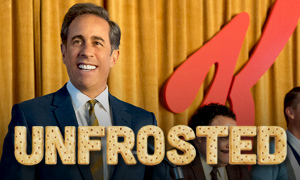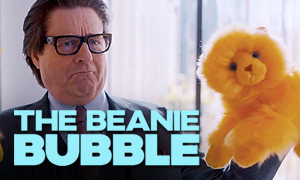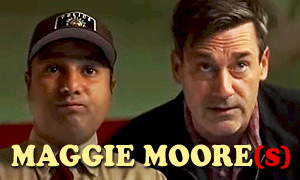Dolemite Is My Name: History vs. Hollywood
| REEL FACE: | REAL FACE: |
Eddie Murphy
Born: April 3, 1961 Birthplace: Brooklyn, New York City, New York, USA | Rudy Ray Moore
Born: March 17, 1927 Birthplace: Fort Smith, Arkansas, USA Death: October 19, 2008, Akron, Ohio, USA (complications from diabetes) |
Wesley Snipes
Born: July 31, 1962 Birthplace: Orlando, Florida, USA | D'Urville Martin
Born: February 11, 1939 Birthplace: New York City, New York, USA Death: May 28, 1984, Los Angeles, California, USA (heart attack) |
Da'Vine Joy Randolph
Born: May 21, 1986 Birthplace: Philadelphia, Pennsylvania, USA | Nancy "Lady" Reed
|
Keegan-Michael Key
Born: March 22, 1971 Birthplace: Southfield, Michigan, USA | Jerry Jones
Born: February 16, 1927 Birthplace: Varner, Arkansas, USA Death: November 18, 2012, Los Angeles, California, USA |
Craig Robinson
Born: October 25, 1971 Birthplace: Chicago, Illinois, USA | Ben Taylor
Composer & singer of Dolemite theme song |
Mike Epps
Born: November 18, 1970 Birthplace: Indianapolis, Indiana, USA | Jimmy Lynch
Born: October 13, 1937 Birthplace: Acmar, Moody, Alabama, USA |
Was Rudy Ray Moore in the Army?
Yes. The Dolemite Is My Name true story reveals that during his time in the US Army, Moore served in an entertainment unit in Germany, singing country songs in R&B style. He included comedy in his routine for his fellow servicemen, and it was then that Moore's interest in comedy took hold.
Before creating the Dolemite character, did Rudy Ray Moore really try to make it as a singer?
Yes. At the beginning of the movie, we see Rudy Ray Moore trying to convince a record store DJ (Snoop Dogg) to play R&B singles he recorded years earlier. The DJ isn't impressed by the overplayed R&B sound. As the real Rudy Ray Moore attempted to make it in the entertainment industry, he tried his hand at magic acts, shake dancing and singing. After serving in the Army as an entertainer, Moore continued to sing in clubs. In the 1950s and early 1960s, he recorded rhythm and blues songs for various labels. He also released his first comedy albums, but ultimately, he was unable to find success.
Did Rudy Ray Moore get his idea for his Dolemite character from a wino?
Yes. The Dolemite true story reveals that the lewd rhymes of a drunken, homeless man named Rico, who was an unwelcome regular at the record store where Rudy Ray Moore worked, indeed gave Moore the idea for his act. He said that in 1970 Rico would come into the store telling outrageous and obscene tales of Dolemite, a fast-talking, crime-fighting blaxploitation antihero. Moore then got the idea to refine and expand on Rico's stories and make them part of his comedy routine.
A struggling 1970s nightclub comedian, Moore was in his 40s when he started performing as Dolemite. Instead of the more common stand-up acts centered around jokes, Moore's routine revolved around him embodying the outlandish character he created. Dolemite was a rhyming, womanizing pimp overflowing with self-adoration and plenty of cheerfully distasteful stories. As Dolemite, he performed a series of over-the-top, rhyming monologues, which were in the vein of Muhammad Ali's declaration to "float like a butterfly and sting like a bee." Jazz and R&B musicians would often play in the background as he spoke, essentially making him one of the forerunners of rap.
In the movie, we see Eddie Murphy as Moore standing on stage declaring, "I once walked from New York City to the Deep Deep South, just to slap a mother—er in his mother—in' mouth." This is a tame example of the comedic rhymes Moore delivered, but not to worry, the film includes many others. -The New York Times
When did Rudy Ray Moore introduce his Dolemite character?
He introduced the character on his 1970 album Eat Out More Often. He then appeared as Dolemite on his subsequent albums This Pu**y Belongs To Me and The Dirty Dozens. It's true that his albums contained highly explicit content and were sold concealed in brown wrapping paper to hide their raunchy covers. This resulted in Moore almost solely relying on word of mouth to promote his comedy records. Do to the graphic content in his routines, Moore didn't make television appearances like contemporaries Richard Pryor and Redd Foxx, though several of his albums did make it onto the Billboard charts. This was in part due to his loyal cult following.
Does the movie accurately portray Rudy Ray Moore's Dolemite character?
For the most part, the Dolemite we see Eddie Murphy convey is accurate, other than the fact that the film downplays the exploitative aspects of the character's pimp persona, of which today's audiences wouldn't be as tolerant.
Did Rudy Ray Moore record his Dolemite albums at home?
Yes. The Dolemite Is My Name true story confirms that Moore had house parties where he would record his performances, using his guests as his audience. In the movie, this is how we see him record his first Dolemite comedy album, Eat Out More Often. He also pressed the records himself and included his own nude portly self on the cover, along with a voluptuous sister. He packaged them in intentionally low-key brown bags and sold them out of his trunk. They sold like mad and it wasn't long before an actual record label came calling.
Had D'Urville Martin (played by Wesley Snipes) really been in some big movies?
Yes. D'Urville Martin had some small parts in big movies, including playing Diego, the elevator operator, in Roman Polanski's 1968 supernatural horror film Rosemary's Baby. He also had a small part in Guess Who's Coming to Dinner the year prior. The true story behind Dolemite confirms that Martin agreed to play the villain, Willie Green, in the film, under the condition that he could direct as well.
Did Rudy Ray Moore finance the movie Dolemite himself?
Yes. He used nearly all of the profits from his comedy records to finance the film almost entirely himself, minus a few sleazy backers. He co-wrote the movie as well and cast it full of strippers he found at a local club. It was shot in a condemned hotel-turned-drug den and crewed with white-boy film students from a local college who knew how to load film into a camera.
Is the white film student, Nick, based on a real person?
Yes. Kodi Smit-McPhee's character, Nick, is based Nicholas von Sternberg, a white UCLA film school DP who got his first motion picture credit working on the Dolemite movie. Nick is the son of legendary director Josef von Sternberg.
Where can I watch Rudy Ray Moore's 1975 blaxploitation movie Dolemite?
Rudy Ray Moore's self-financed 1975 film Dolemite is currently included with Amazon Prime. For customers without Prime, it is available on Amazon to buy or rent. In the film, Dolemite is a pimp who gets out of prison and seeks revenge on a former rival named Willie Green (D'Urville Martin), who set him up. He enlists his kung-fu-capable army of prostitutes to help him battle his foes. The movie is filled with guns, sex, and of course kung fu, often going over the top. For example, in one scene, Dolemite reaches into a character's stomach and pulls out his guts. Eddie Murphy recreated the filming of the scene for the Dolemite Is My Name movie.
Was Rudy Ray Moore's movie Dolemite a box-office success?
Yes. In researching the Dolemite true story, we learned that the movie's (and Moore's) success indeed came down to a single midnight screening in Indianapolis. The film was initially blasted by critics, who ridiculed the acting, low-production value and muddled storyline. Yet, just how the character itself attracted a cult following, so did the film. It would go on to gross $12 million at the box office ($58 million by today's standards). It yielded three sequels, The Human Tornado (1976), Shaolin Dolemite (1999) and The Dolemite Explosion (2002).
Did Rudy Ray Moore help give birth to rap music?
Yes. "Rudy Ray Moore is one of the first ones to put rap and rhyme to rhythm," said Snoop Dogg, who stated that without Moore there would be no Snoop. Dolemite recordings have been sampled in many rap songs, and early rap artists even recruited Moore for guest spots on their tracks. Rappers who featured Moore include Eazy-E, Big Daddy Kane, Busta Rhymes, 2 Live Crew and Snoop Dogg. -The New York Times
Did Rudy Ray Moore have any children?
Yes. Rudy Ray Moore was never married but had two children. He passed away in 2008 from complications from diabetes.
Rudy Ray Moore Interviews & Related Videos
Get an inside look at the Dolemite true story by watching a Rudy Ray Moore interview during which he talks about the character and his career.







